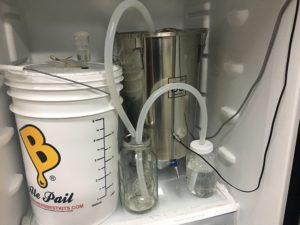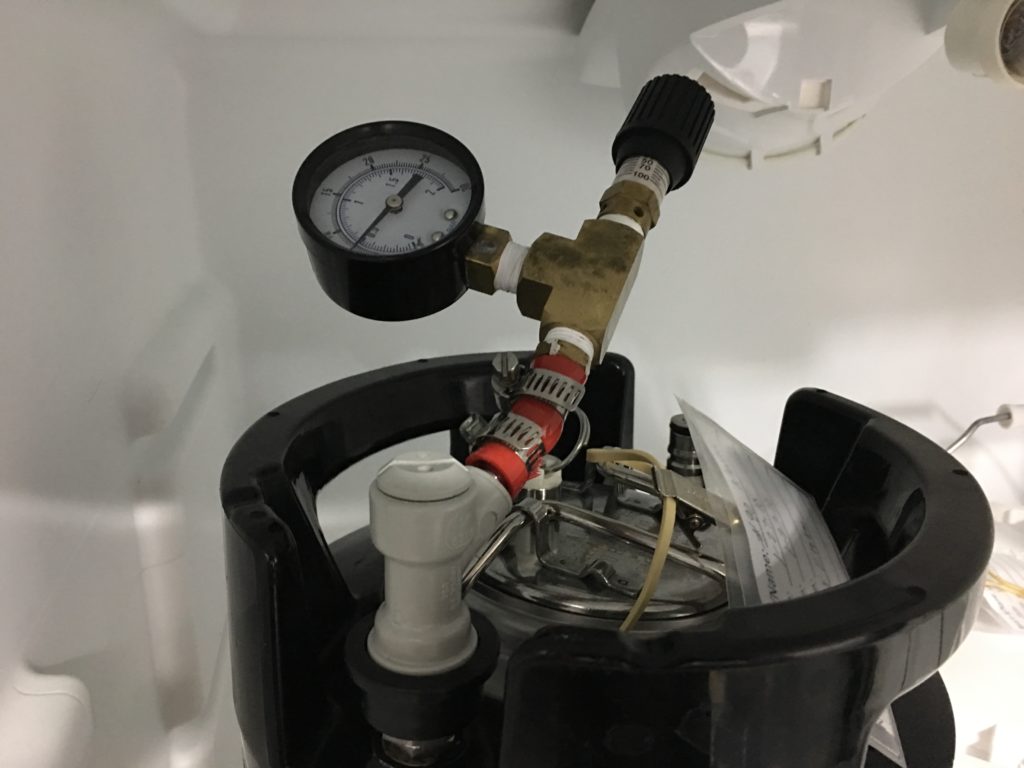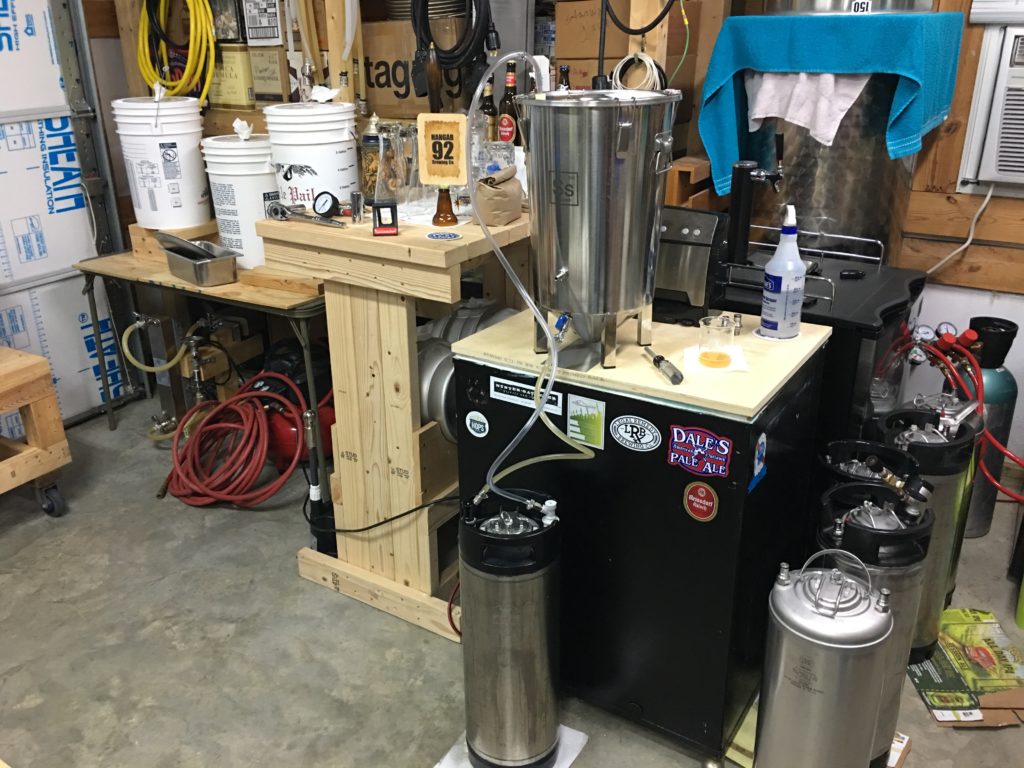 I brewed a German Pilsner on January 27, 2018 and used my new Ss Brewtech BrewBucket. It was nice to be able to take samples during the ferment so see how it progresses. I pulled a few samples during the first week and when it got to around 18% remaining I decided to go ahead and keg the beer.
I brewed a German Pilsner on January 27, 2018 and used my new Ss Brewtech BrewBucket. It was nice to be able to take samples during the ferment so see how it progresses. I pulled a few samples during the first week and when it got to around 18% remaining I decided to go ahead and keg the beer.
So, on Sunday, February 4, 2018, I used the closed system keg procedure similar to what I found on LowOxygenBrewing.com I sat the BrewBucket on a table and ran a line from the valve to the “OUT” post of the keg. Then ran a tube from the “IN” post on the keg to the air lock hole in the lid of the BrewBucket. This set up allowed me to run the beer into the keg without exposure to outside air. As the beer flows into the keg, CO2 is pulled from the keg into the air lock hole. This went fairly smoothly for the first time. I will need to tweak a few things to make it easier next time.
After kegging, I added about 3 PSI of tank CO2 to the keg to seal the poppets and valve. I put the spunding valve on the keg and sat it back into the fermenter fridge to continue fermenting. The pressure started at about 0.2625 bar and by 2:30 PM the pressure had risen to 0.4625.






